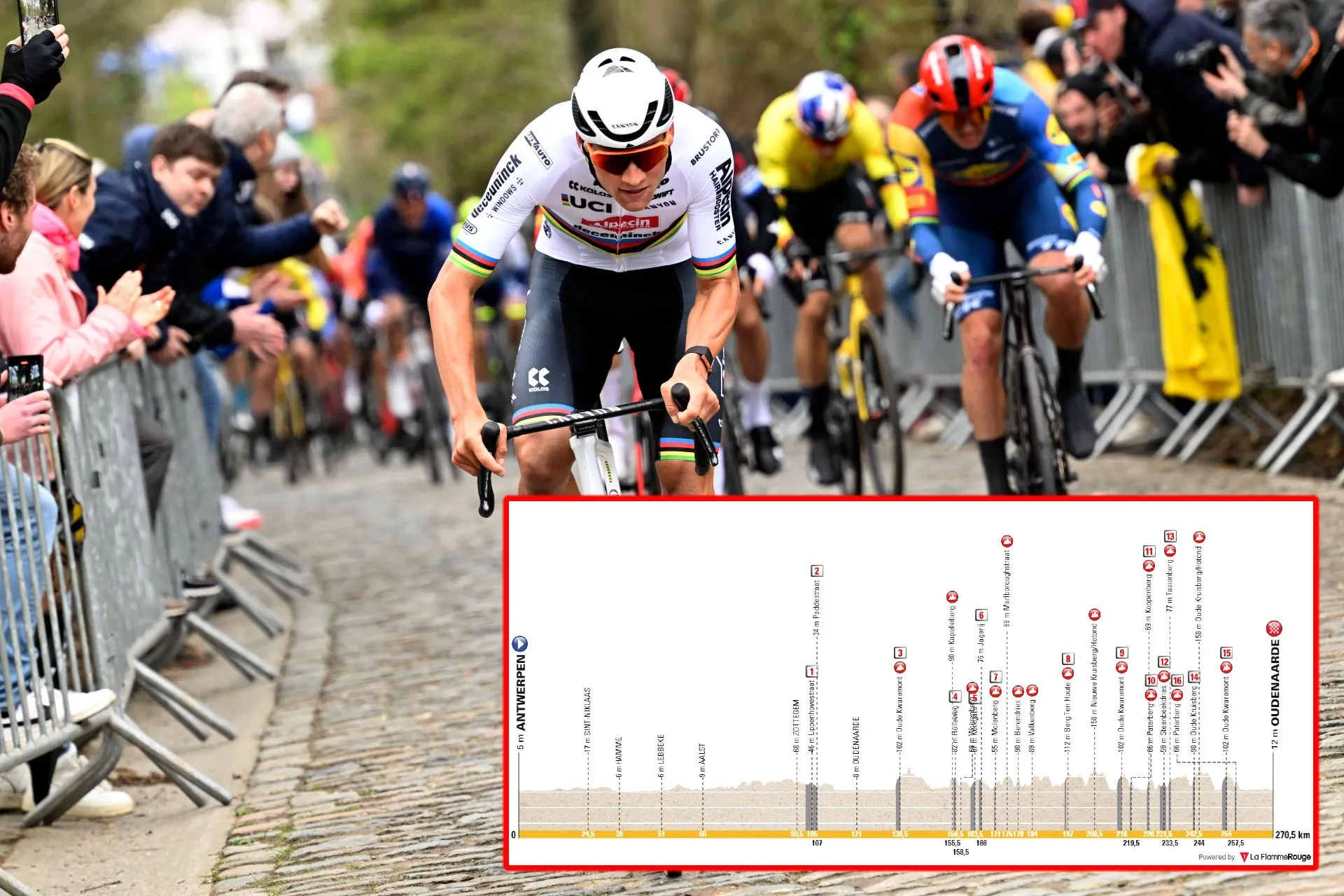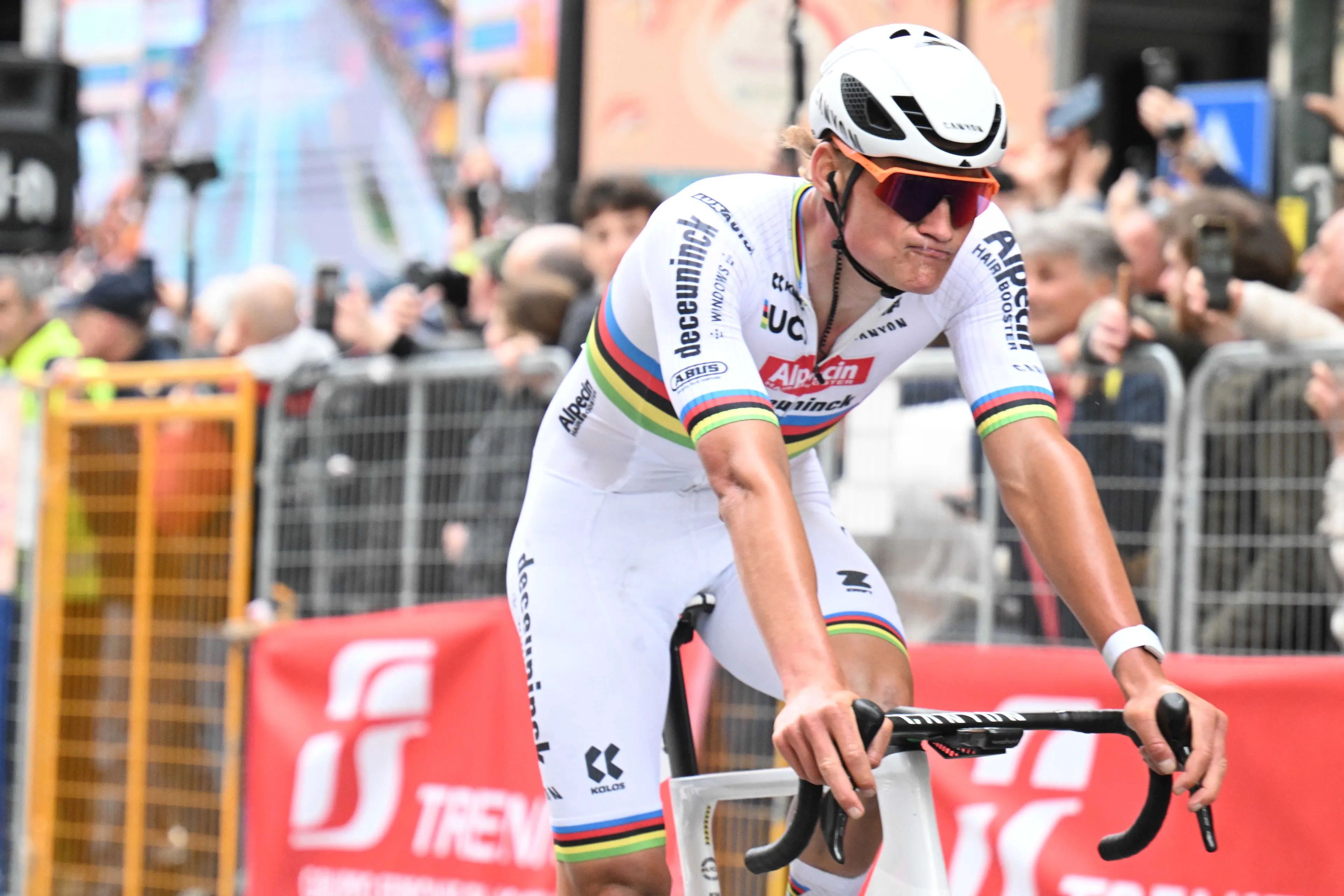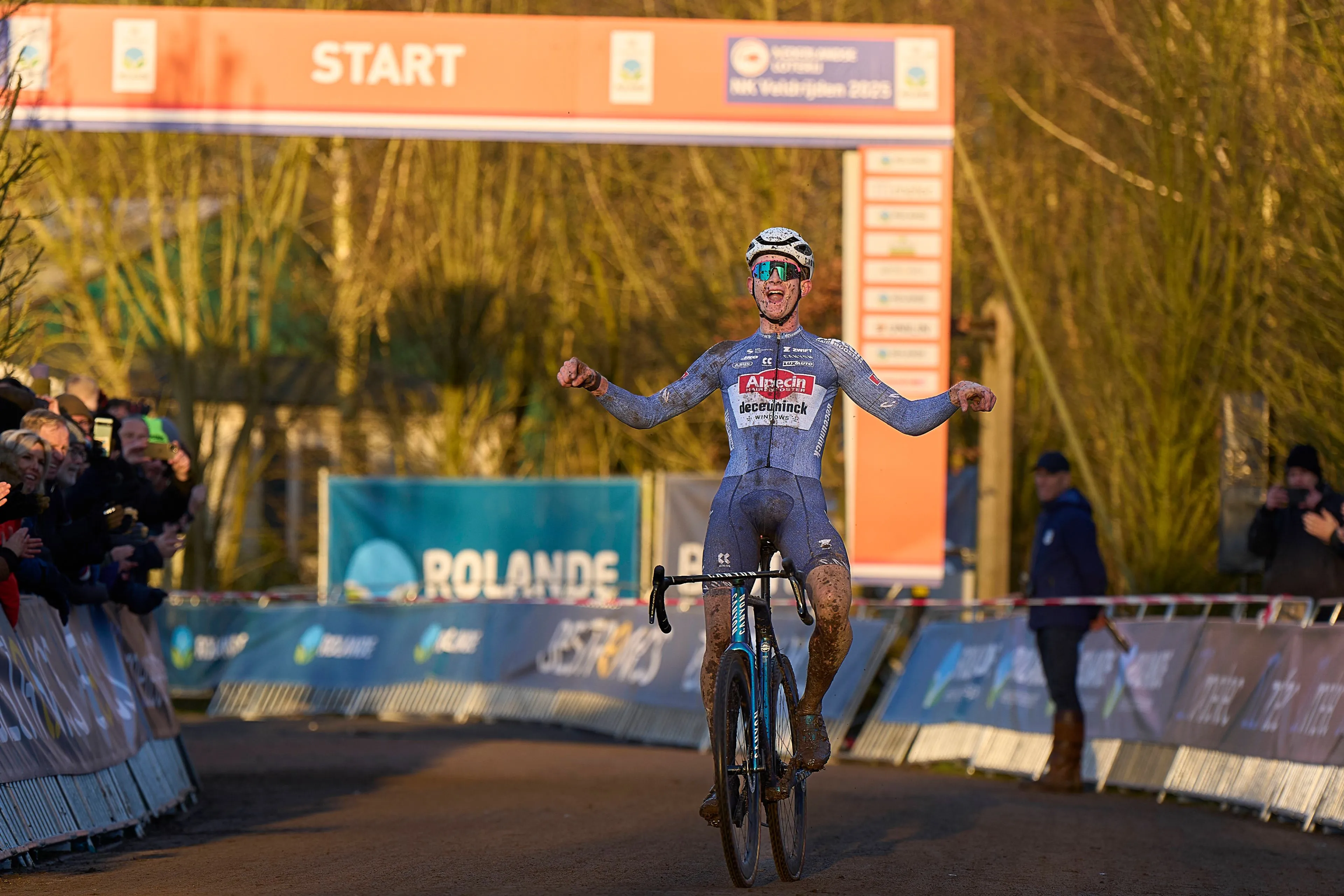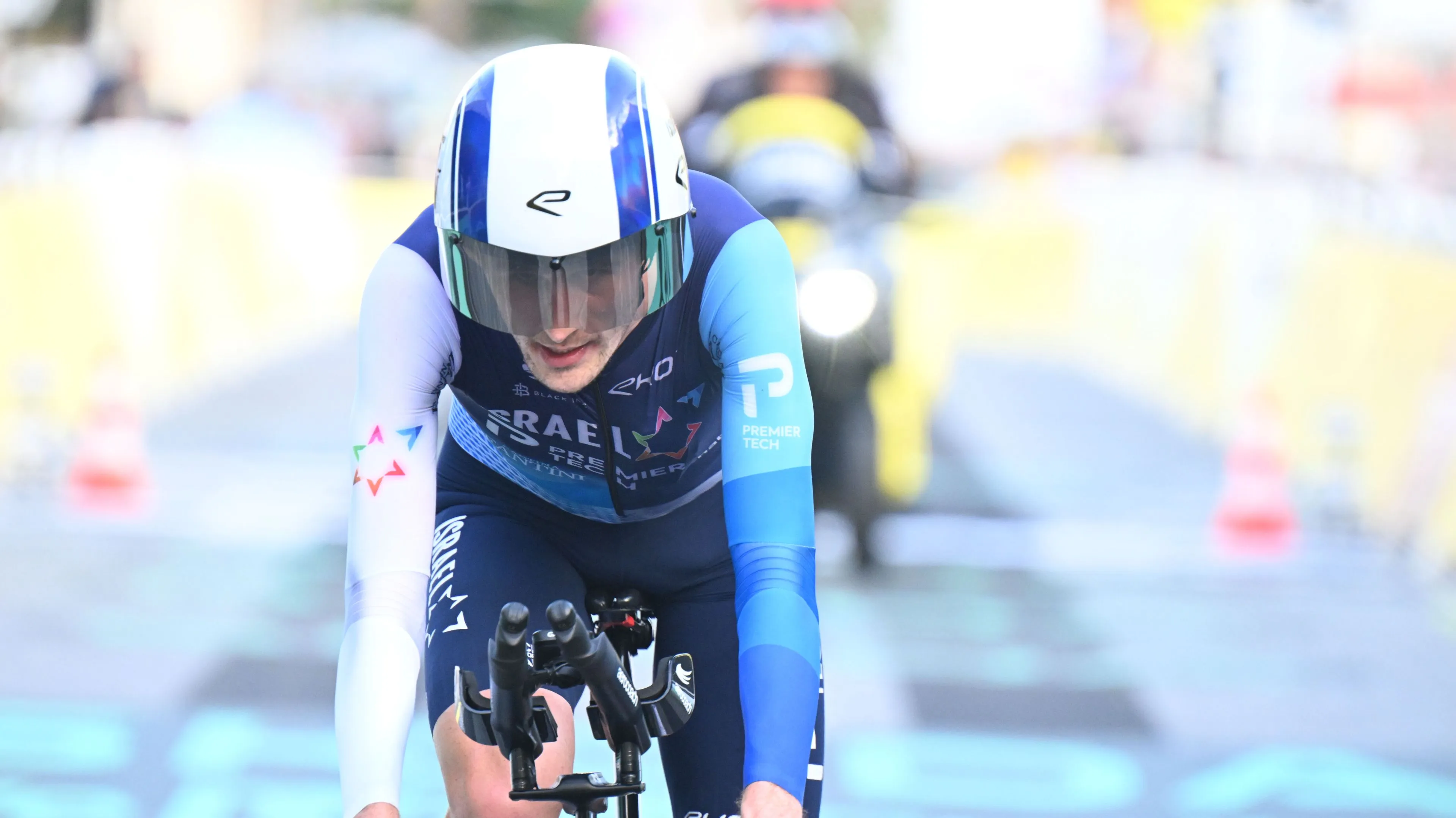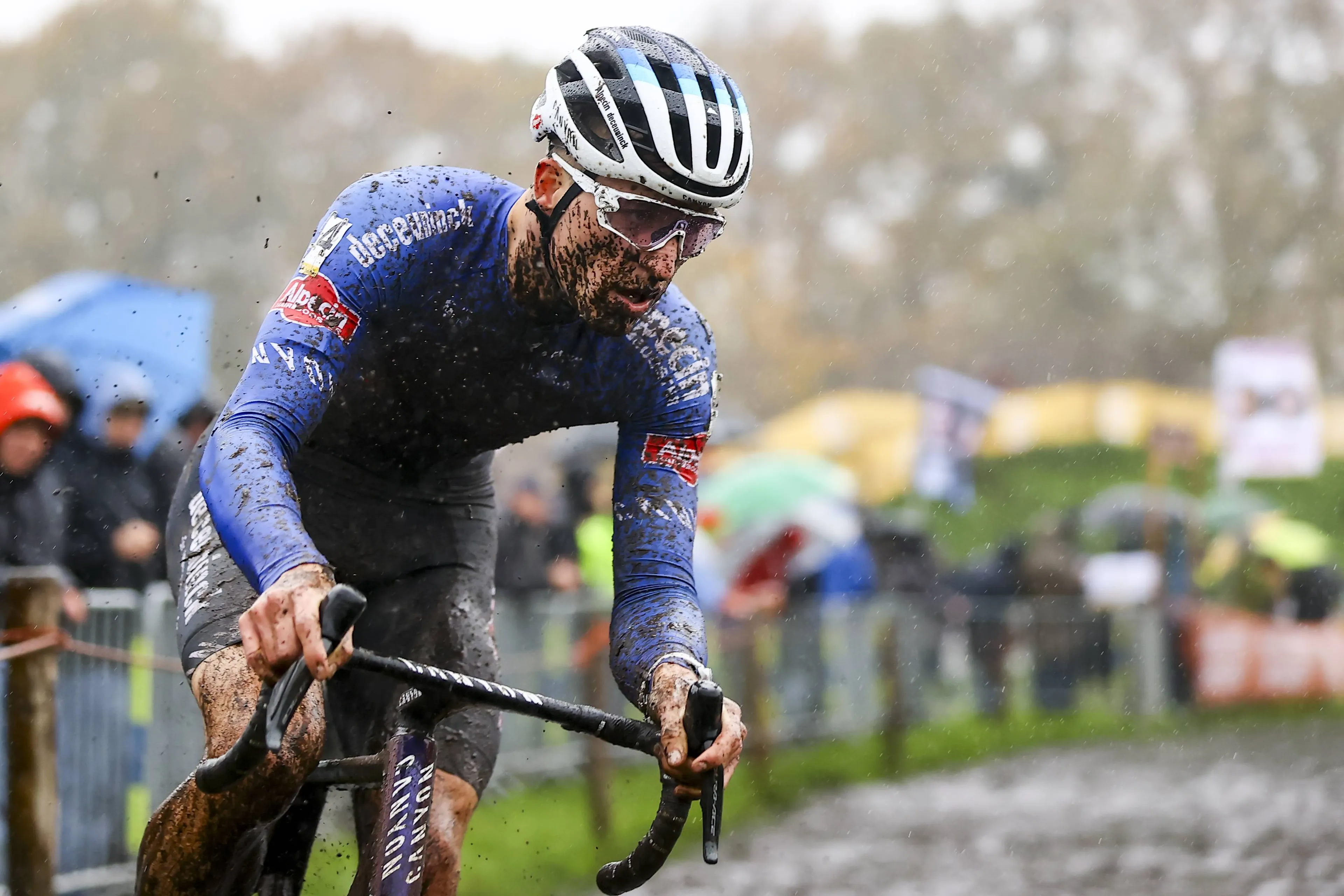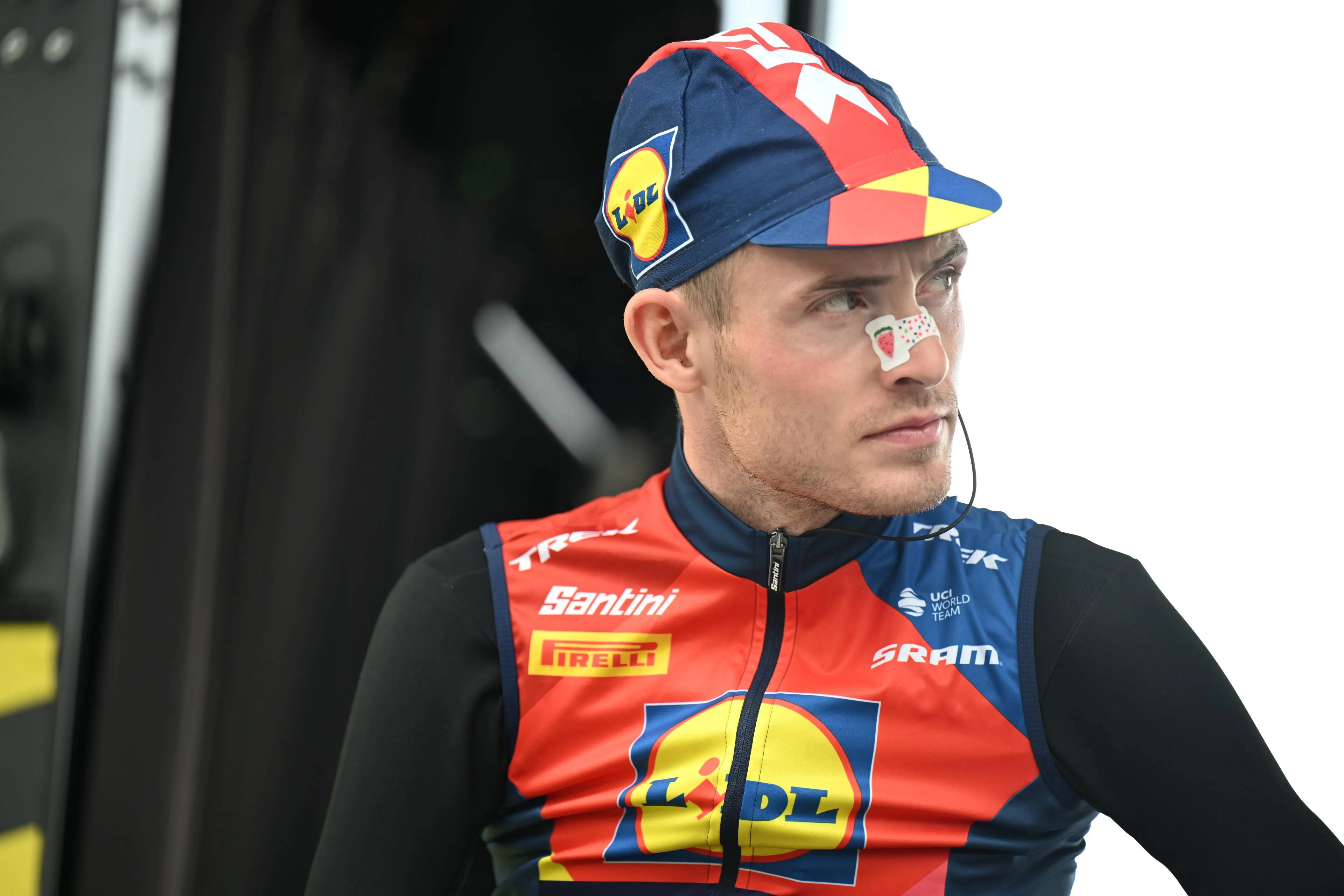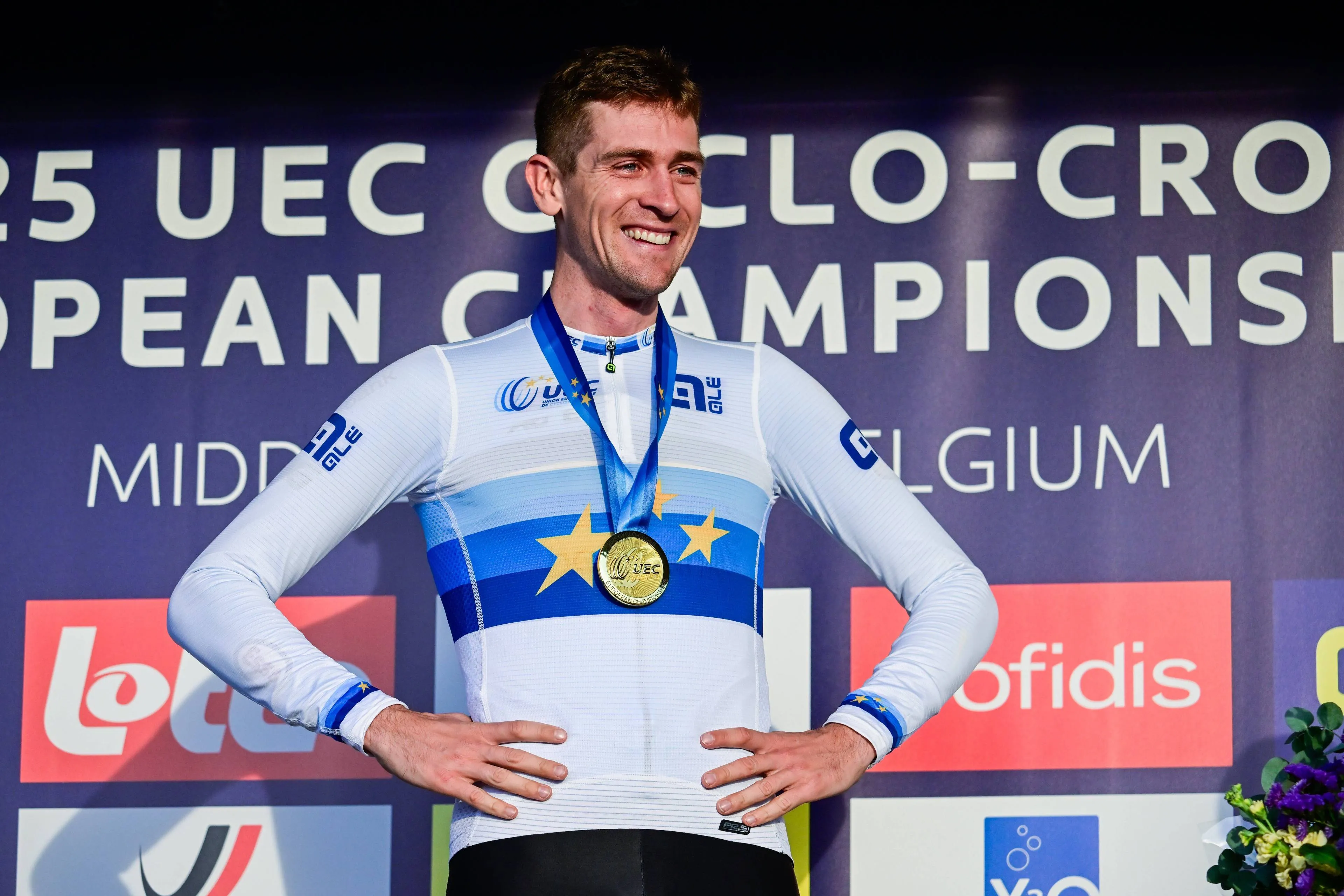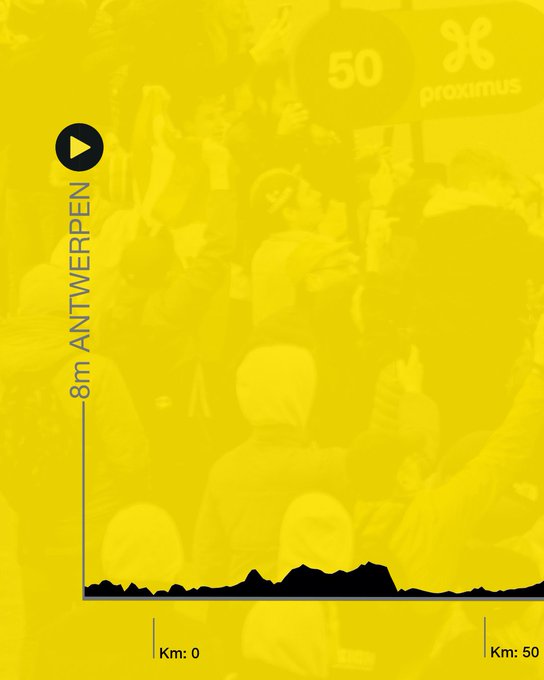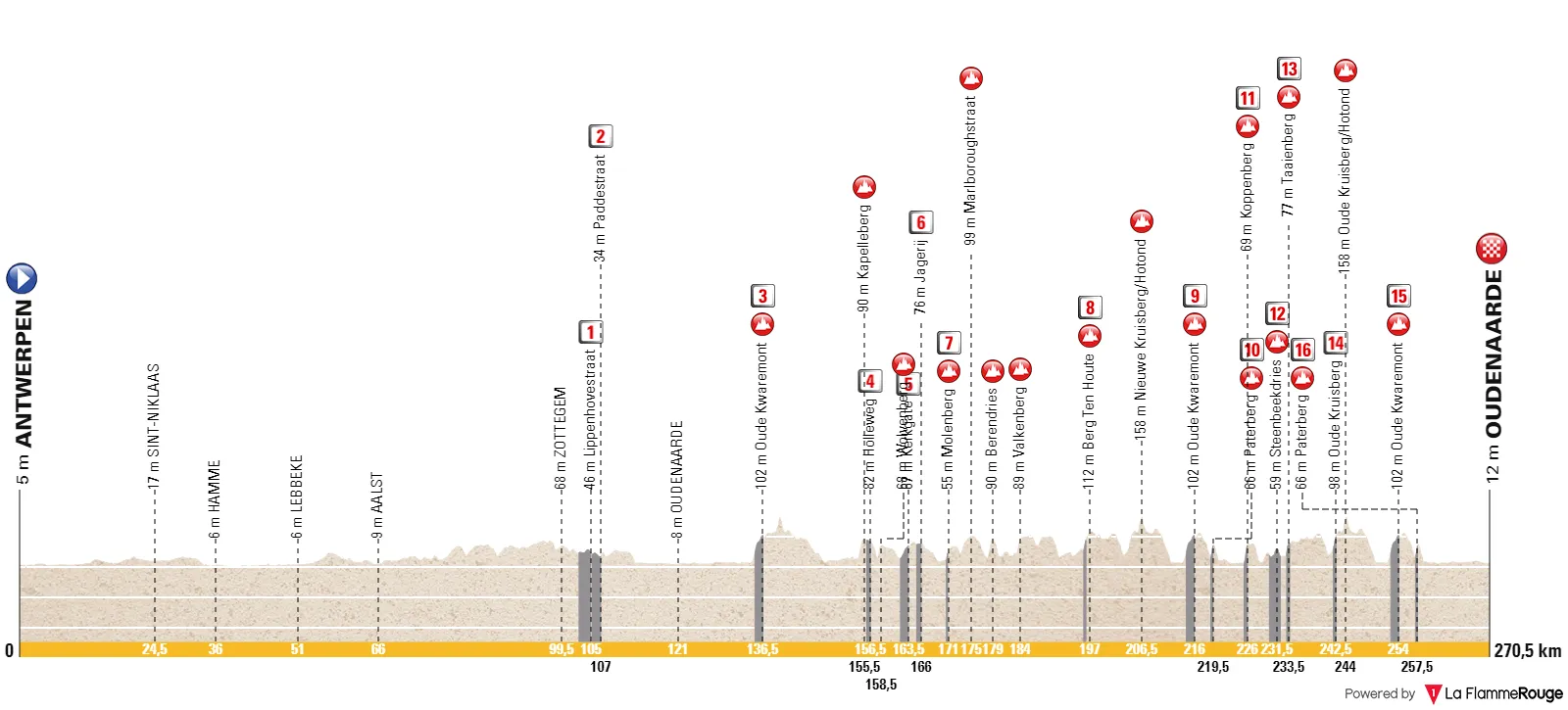
The Tour of Flanders, renowned as the second monument of the season and the pinnacle of all Flandrien classics, stands as one of the most important and thrilling days in the cycling calendar. This prestigious race sees the biggest classics specialists battling it out on the steep cobbled climbs in pursuit of a prestigious victory. Let's delve into its profile.
270 kilometers on the menu this year. The distance will make for a brutal race, the Tour of Flanders has always been a race for the riders who are capable of performing on a bike at top level for a large number of hours and this year that capacity will be put to the limit. The start at Antwerpen will then see just a bit over 130 kilometers that are mostly set to be calm, approximately half of the race. However in the second half everything changes, as the Oude Kwaremont will open things up.
Read also

From 1375to 84 kilometers to go there will be a long succession of bergs and cobbled sectors that will thin down the peloton. Big attacks will no happen here, as the main favourites need to save their bullets wisely, however set-up attacks, split attempts and a lot of fatigue buildup may happen here.
The crucial section of the race starts with the second passage over the Oude Kwaremont. Kwaremont, Koppenberg and Paterberg come in quick succession and this trio of ascents will not only destroy the peloton, it will also provide opportunities to launch potentially decisive attacks. They come with 54.5, 51 and 44.5 kilometers to go. Not many riders will survive the peloton afterwards, and with a thinned down group decisive attacks can also come after as the chasing power will not be so meaningful.
Read also
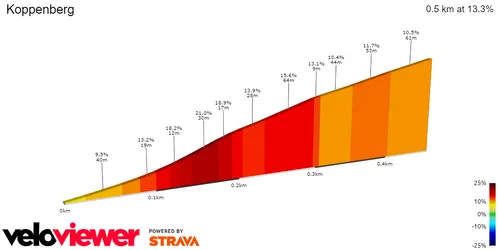
Koppenberg: 600 meters; 13.3%; 44.5Km to go
Steenbeekdries (39Km to go), Taaienberg (37Km to go) and Oude Kruisberg (28Km to go) follow afterwards and provide further launching pads for dangerous attacks. After a small descent the race will enter it’s final sectors.
For the third and last time, the Oude Kwaremont. A grueling berg with inconsistent gradients, it summits with 16.5Km to go.
Read also
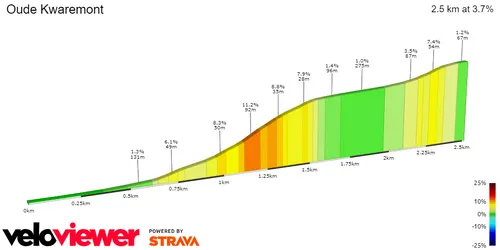
Oude Kwaremont: 2.5Km; 3.7%; 16.5Km
And after a short section, the final berg of the race is always one that may see the differences, the Paterberg. Short but sharp, essentially a one-minute all-out effort after around 6:30h of hard racing where slipstreaming is not a thing. A climb most will know like the back of their hand, it will summit with 13 kilometers to go.
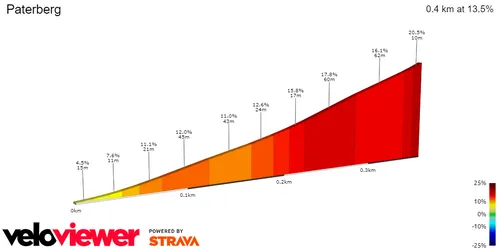
Paterberg: 400 meters; 13.5%; 13Km to go
As every year, the run-up to Oudenaarde then is quite excruciating. Pan-flat after the small descent from the Paterberg, it is a place where attacks can still happen, but whatever happens depends on what will happen over the ascents.
Read also

Finale Tour des Flandres 2023
claps 0visitors 0
Just in
Popular news
Latest comments
- He’s done cross before. I bet if he dedicated himself to that he’d start cleaning up.mobk14-12-2025
- 1. No, the team owners want to have reliable money without having to actually perform. 2. It's "creative destruction". It's how things improve. Resources and labor are put to more productive uses. 3. That'd be more likely to happen if you listened to these "cycling is unsustainable" whiners. 4. There are thousands of pro races per year. Some teams are happy with a podium. Everything here is a Non Sequitur. -An Economistacem8214-12-2025
- I appreciate the restraint for sure.mij14-12-2025
- I was thinking the same thing. some of the questions were just terrible.mij14-12-2025
- He could always try some off road racing, where skills play a part, not just his engine. A great road rider, but not a complete all round rider......wipperman9513-12-2025
- As a cyclist, I'm amazed by his capabilities, as a fan I believe he will be considered as the best ever by the time he retires.awp13-12-2025
- While he is a good rider, he is not in the Pogi, Vingegaard, Lipo and others category yet. Can he be? Time will tell but for now he is in a 2nd Tier. And let's not forget guys like Del Torro who very well could be almost if not as good as Pogi in a year or twomd197513-12-2025
- That question about the last wk of the 'tour, like seriously, did the journo not know he had a knee problem.. 🤷
 leedorney13-12-2025
leedorney13-12-2025 - They're hoping to develop GC talent. This is the best way they can do that with their roster.Veganpotter13-12-2025
- You have never seen a greater sportsman and you will never see one in your lifetime. Admire this man who was sent to earth by God himself to represent him on a bike. Tadej Pogacar will go down in history as the Greatest Of All Time-The GOAT!!!NikkoNicco13-12-2025
Loading
1 Comments
